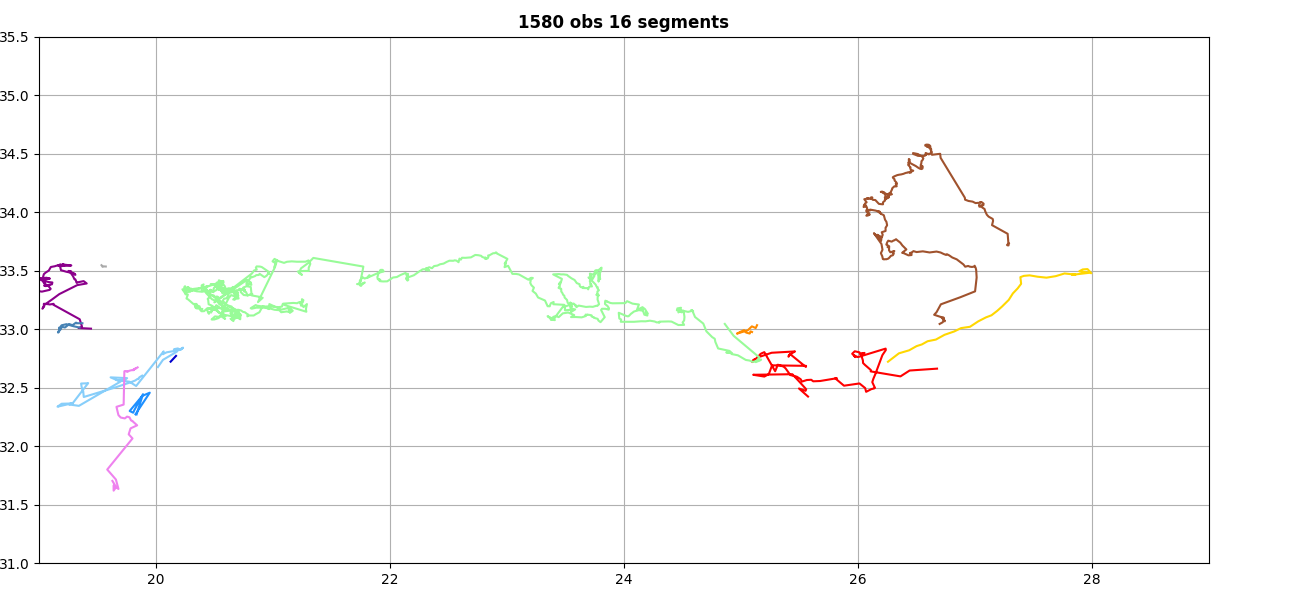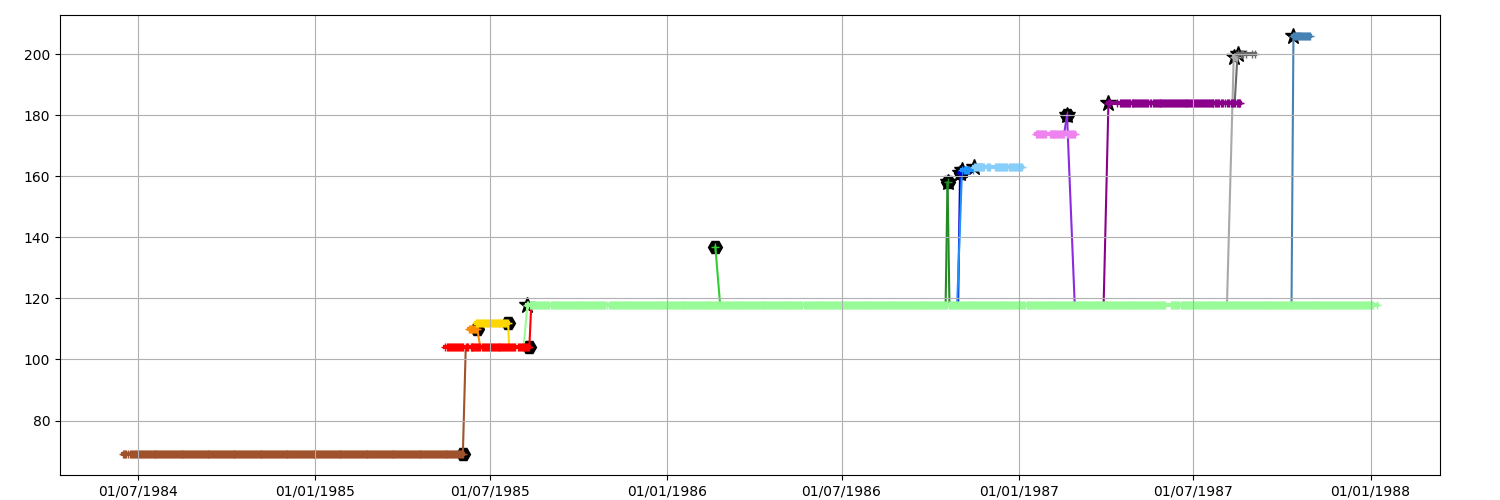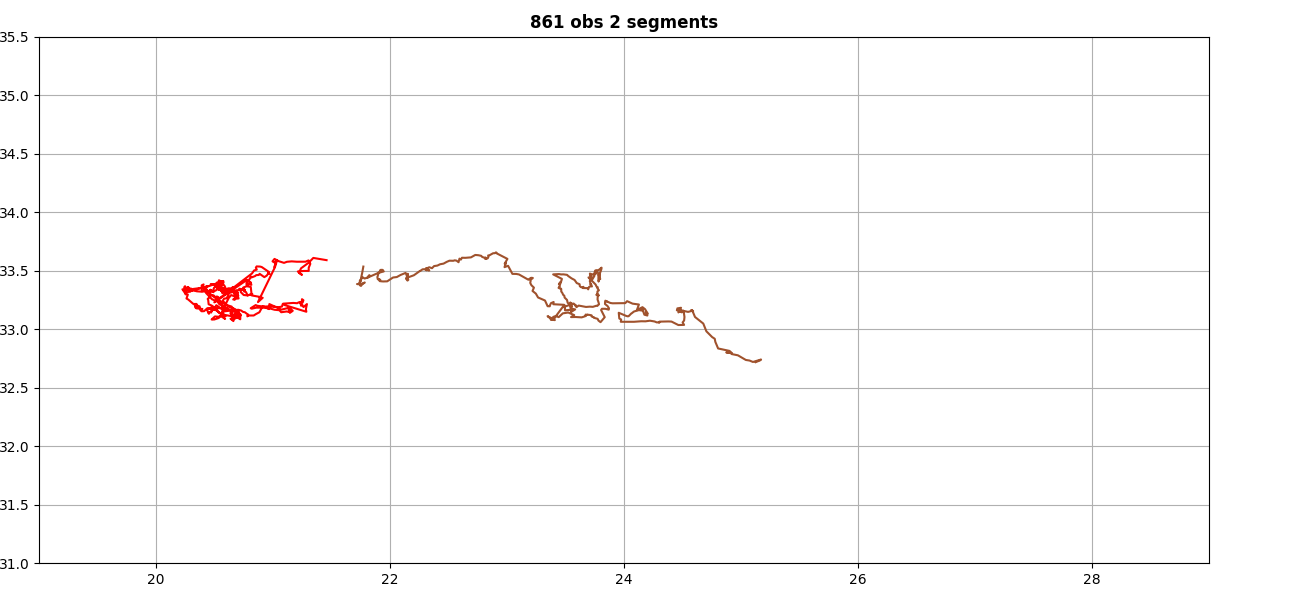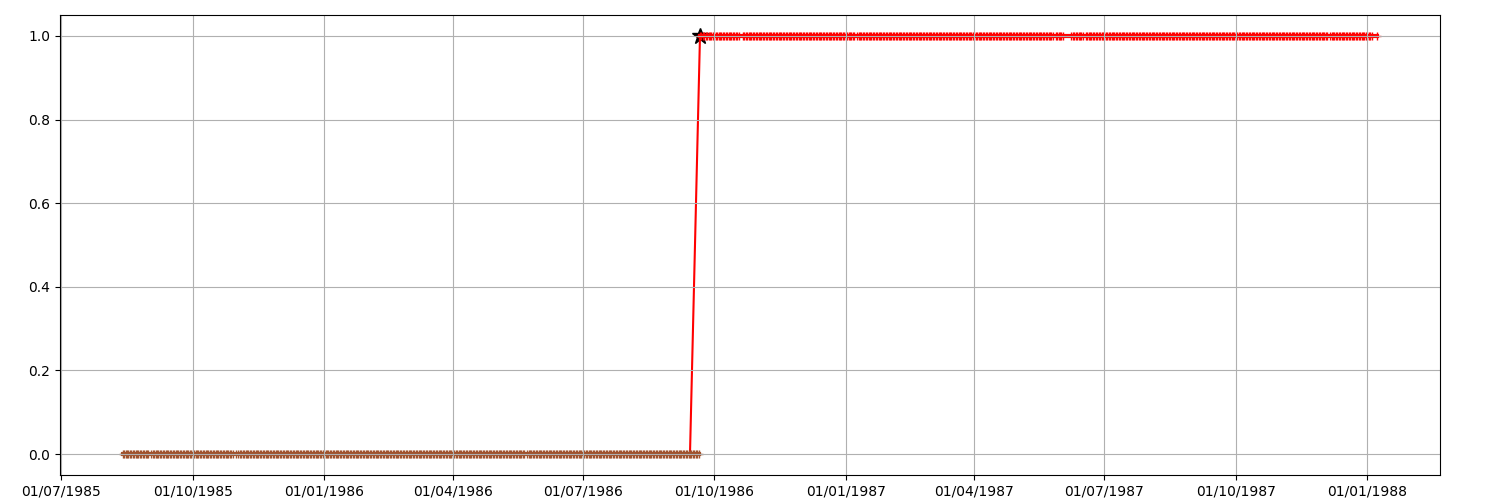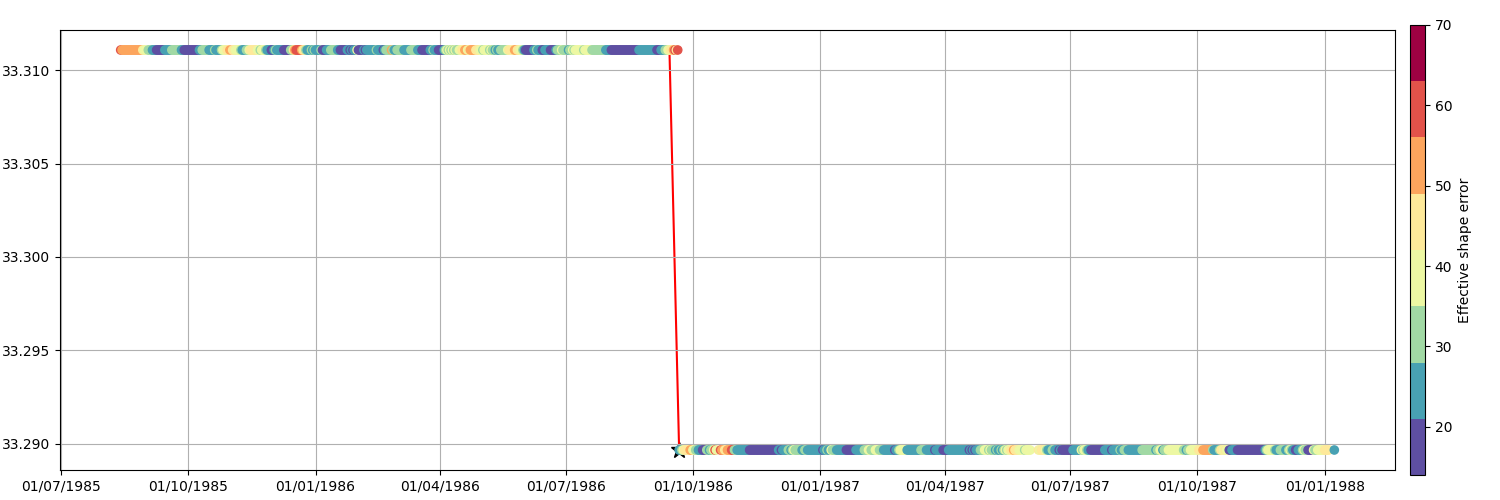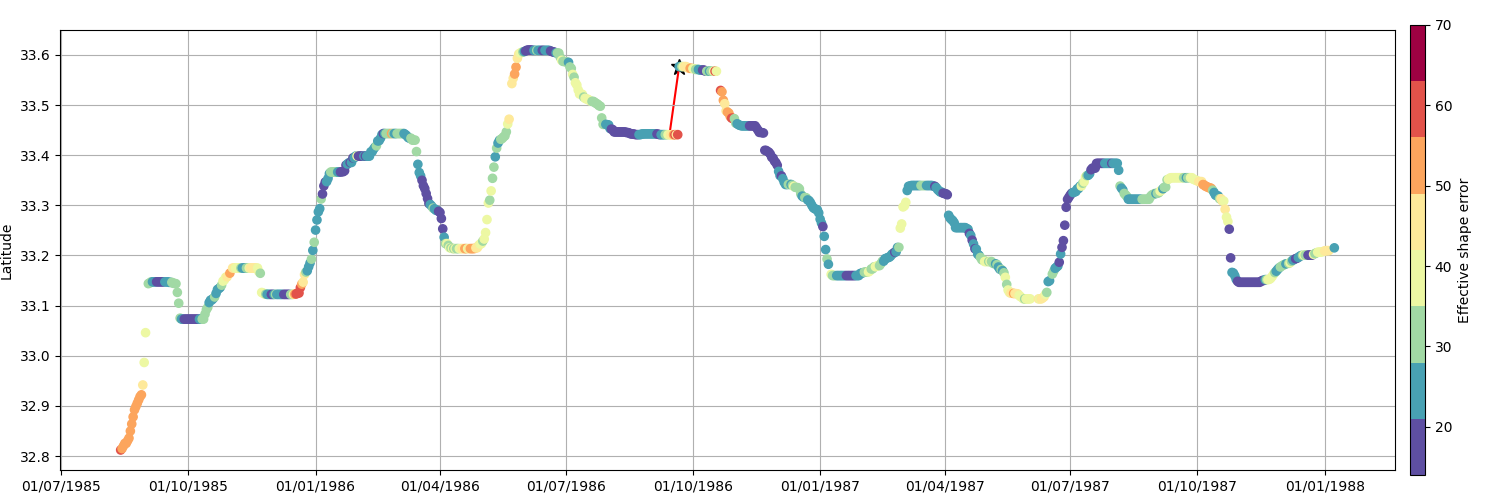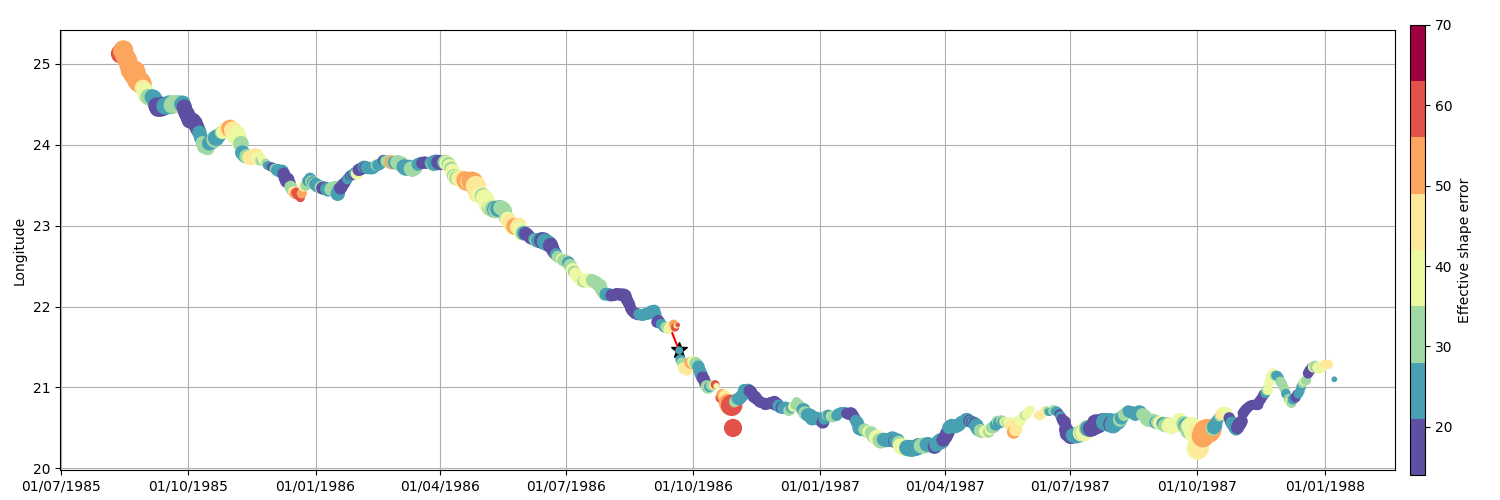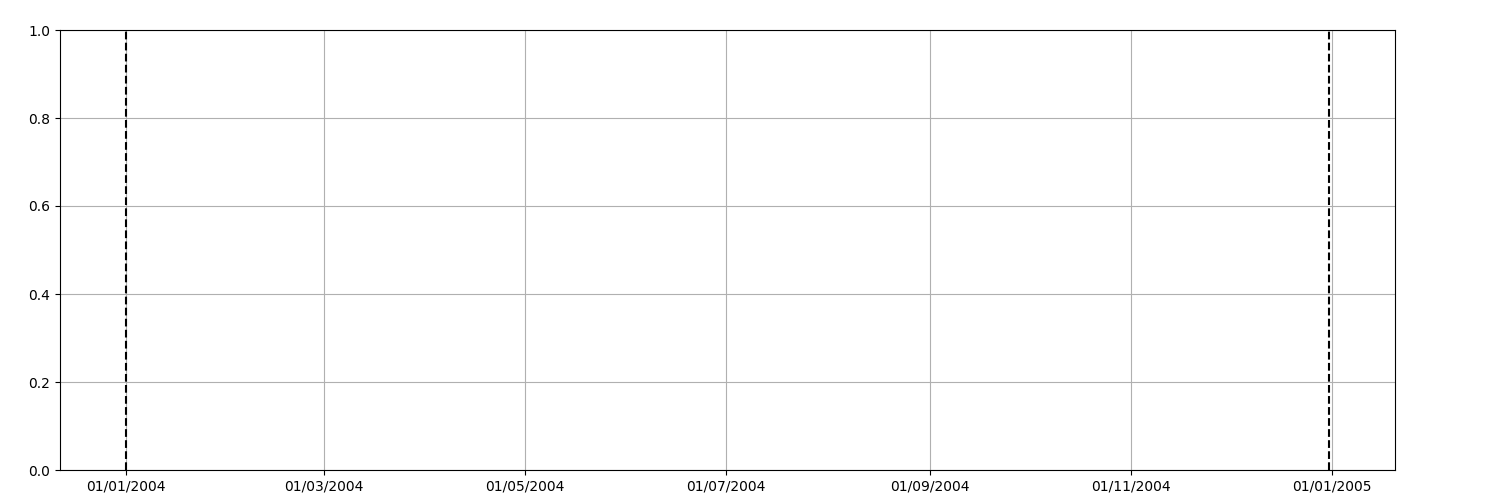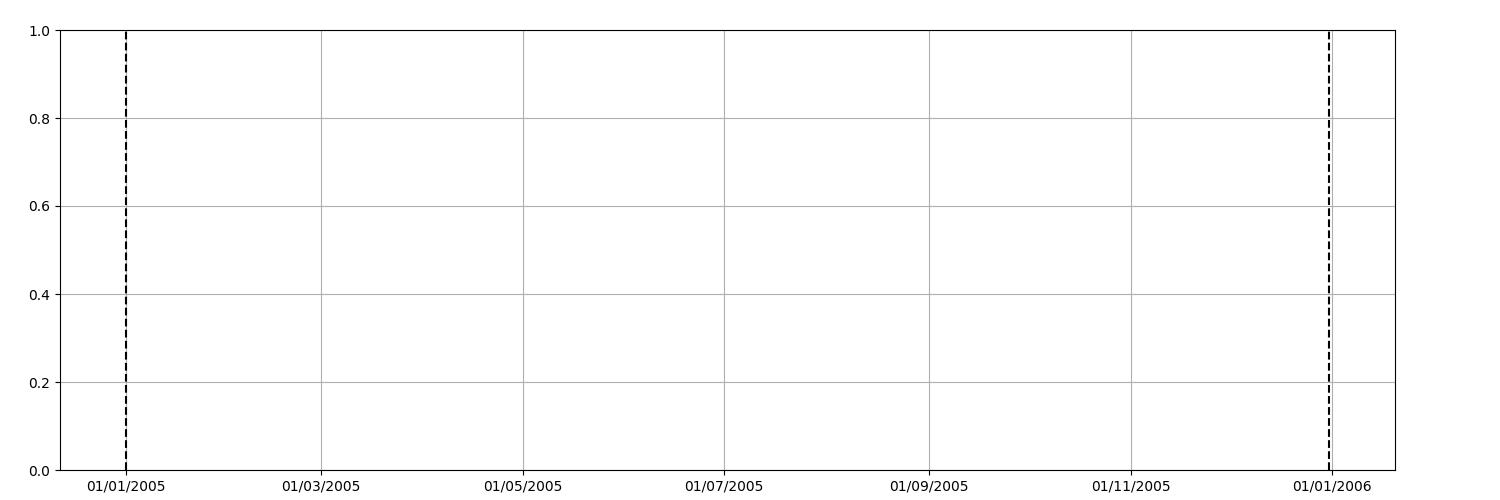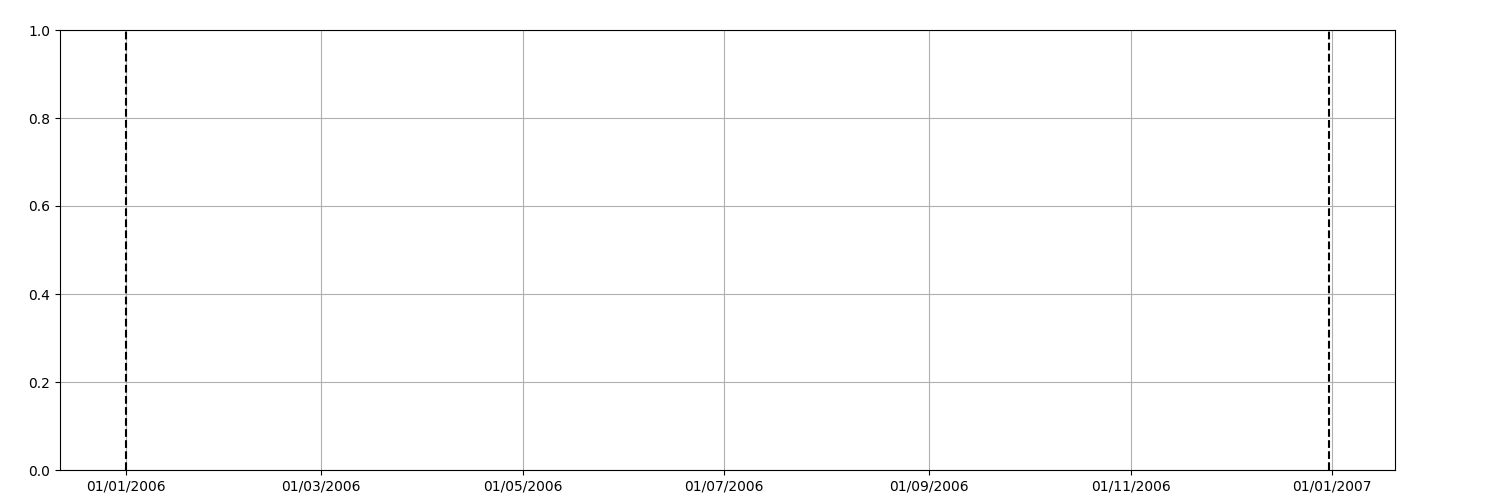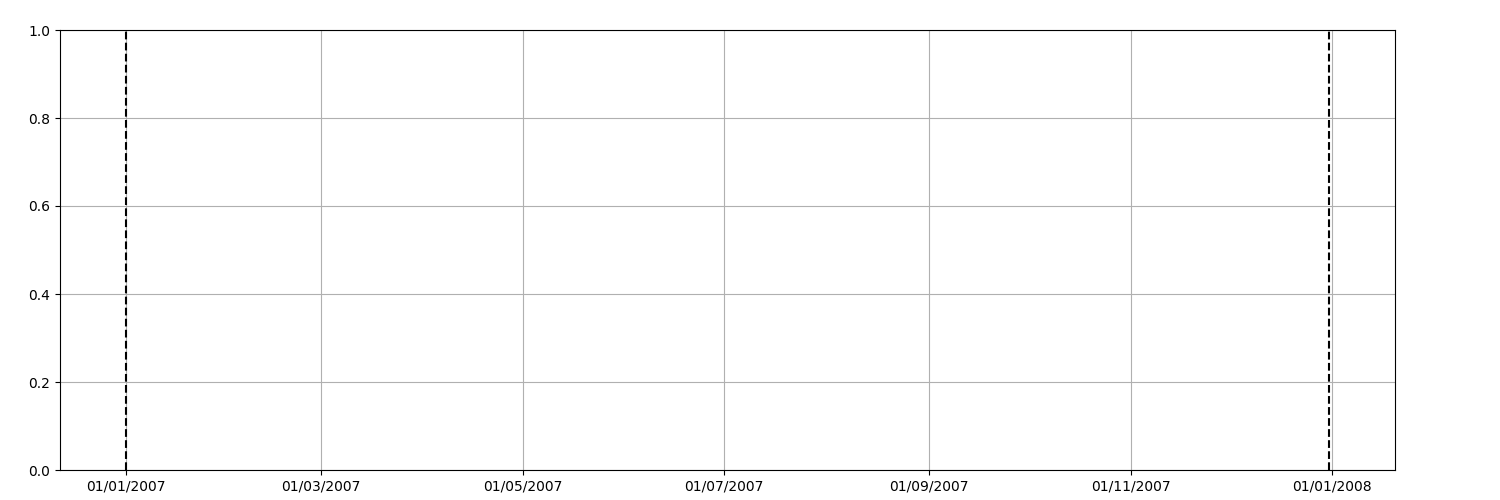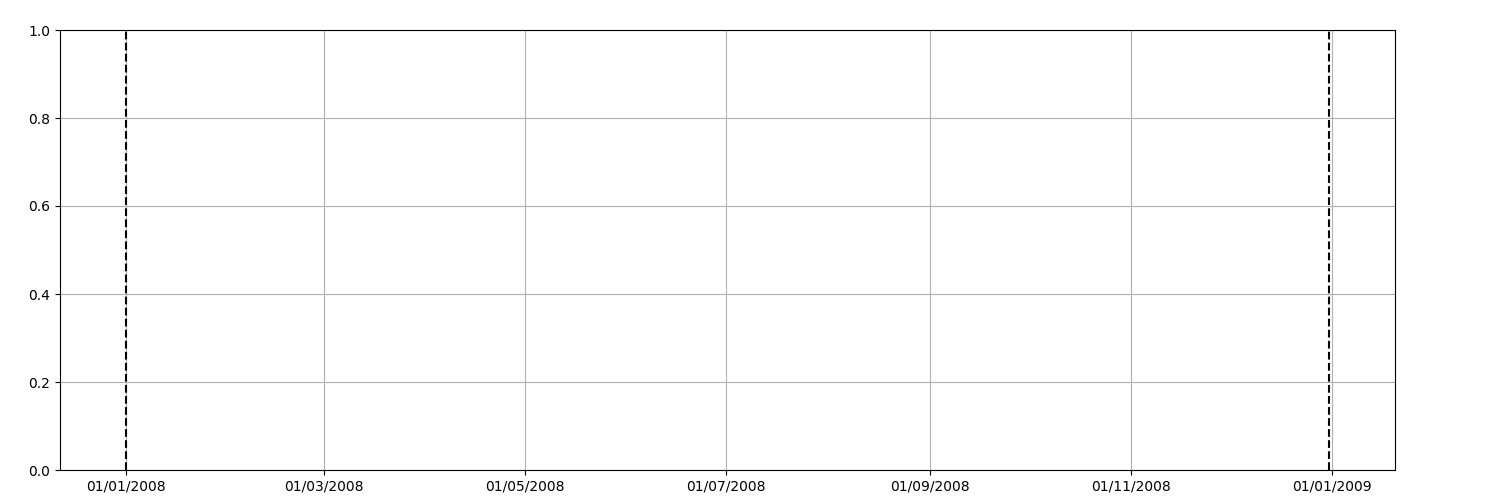Note
Go to the end to download the full example code or to run this example in your browser via Binder
Replay segmentation¶
Case from figure 10 from https://doi.org/10.1002/2017JC013158
Again with the Ierapetra Eddy
from datetime import datetime, timedelta
from matplotlib import pyplot as plt
from matplotlib.ticker import FuncFormatter
from numpy import where
from py_eddy_tracker.data import get_demo_path
from py_eddy_tracker.gui import GUI_AXES
from py_eddy_tracker.observations.network import NetworkObservations
from py_eddy_tracker.observations.tracking import TrackEddiesObservations
@FuncFormatter
def formatter(x, pos):
return (timedelta(x) + datetime(1950, 1, 1)).strftime("%d/%m/%Y")
def start_axes(title=""):
fig = plt.figure(figsize=(13, 6))
ax = fig.add_axes([0.03, 0.03, 0.90, 0.94], projection=GUI_AXES)
ax.set_xlim(19, 29), ax.set_ylim(31, 35.5)
ax.set_aspect("equal")
ax.set_title(title, weight="bold")
return ax
def timeline_axes(title=""):
fig = plt.figure(figsize=(15, 5))
ax = fig.add_axes([0.04, 0.06, 0.89, 0.88])
ax.set_title(title, weight="bold")
ax.xaxis.set_major_formatter(formatter), ax.grid()
return ax
def update_axes(ax, mappable=None):
ax.grid(True)
if mappable:
return plt.colorbar(mappable, cax=ax.figure.add_axes([0.94, 0.05, 0.01, 0.9]))
Class for new_segmentation¶
The oldest win
class MyTrackEddiesObservations(TrackEddiesObservations):
__slots__ = tuple()
@classmethod
def follow_obs(cls, i_next, track_id, used, ids, *args, **kwargs):
"""
Method to overwrite behaviour in merging.
We will give the point to the older one instead of the maximum overlap ratio
"""
while i_next != -1:
# Flag
used[i_next] = True
# Assign id
ids["track"][i_next] = track_id
# Search next
i_next_ = cls.get_next_obs(i_next, ids, *args, **kwargs)
if i_next_ == -1:
break
ids["next_obs"][i_next] = i_next_
# Target was previously used
if used[i_next_]:
i_next_ = -1
else:
ids["previous_obs"][i_next_] = i_next
i_next = i_next_
def get_obs(dataset):
"Function to isolate a specific obs"
return where(
(dataset.lat > 33)
* (dataset.lat < 34)
* (dataset.lon > 22)
* (dataset.lon < 23)
* (dataset.time > 20630)
* (dataset.time < 20650)
)[0][0]
Get original network, we will isolate only relative at order 2
n = NetworkObservations.load_file(get_demo_path("network_med.nc")).network(651)
n_ = n.relative(get_obs(n), order=2)
Display the default segmentation
ax = start_axes(n_.infos())
n_.plot(ax, color_cycle=n.COLORS)
update_axes(ax)
fig = plt.figure(figsize=(15, 5))
ax = fig.add_axes([0.04, 0.05, 0.92, 0.92])
ax.xaxis.set_major_formatter(formatter), ax.grid()
_ = n_.display_timeline(ax)
Run a new segmentation¶
e = n.astype(MyTrackEddiesObservations)
e.obs.sort(order=("track", "time"), kind="stable")
split_matrix = e.split_network(intern=False, window=7)
n_ = NetworkObservations.from_split_network(e, split_matrix)
n_ = n_.relative(get_obs(n_), order=2)
n_.numbering_segment()
New segmentation¶
“The oldest wins” method produce a very long segment
ax = start_axes(n_.infos())
n_.plot(ax, color_cycle=n_.COLORS)
update_axes(ax)
fig = plt.figure(figsize=(15, 5))
ax = fig.add_axes([0.04, 0.05, 0.92, 0.92])
ax.xaxis.set_major_formatter(formatter), ax.grid()
_ = n_.display_timeline(ax)
Parameters timeline¶
kw = dict(s=35, cmap=plt.get_cmap("Spectral_r", 8), zorder=10)
ax = timeline_axes()
n_.median_filter(15, "time", "latitude")
m = n_.scatter_timeline(ax, "shape_error_e", vmin=14, vmax=70, **kw, yfield="lat")
cb = update_axes(ax, m["scatter"])
cb.set_label("Effective shape error")
ax = timeline_axes()
n_.median_filter(15, "time", "latitude")
m = n_.scatter_timeline(
ax, "shape_error_e", vmin=14, vmax=70, **kw, yfield="lat", method="all"
)
cb = update_axes(ax, m["scatter"])
cb.set_label("Effective shape error")
ax.set_ylabel("Latitude")
ax = timeline_axes()
n_.median_filter(15, "time", "latitude")
kw["s"] = (n_.radius_e * 1e-3) ** 2 / 30**2 * 20
m = n_.scatter_timeline(
ax, "shape_error_e", vmin=14, vmax=70, **kw, yfield="lon", method="all"
)
ax.set_ylabel("Longitude")
cb = update_axes(ax, m["scatter"])
cb.set_label("Effective shape error")
Cost association plot¶
n_copy = n_.copy()
n_copy.median_filter(2, "time", "next_cost")
for b0, b1 in [
(datetime(i, 1, 1), datetime(i, 12, 31)) for i in (2004, 2005, 2006, 2007, 2008)
]:
ref, delta = datetime(1950, 1, 1), 20
b0_, b1_ = (b0 - ref).days, (b1 - ref).days
ax = timeline_axes()
ax.set_xlim(b0_ - delta, b1_ + delta)
ax.set_ylim(0, 1)
ax.axvline(b0_, color="k", lw=1.5, ls="--"), ax.axvline(
b1_, color="k", lw=1.5, ls="--"
)
n_copy.display_timeline(ax, field="next_cost", method="all", lw=4, markersize=8)
n_.display_timeline(ax, field="next_cost", method="all", lw=0.5, markersize=0)
Total running time of the script: ( 0 minutes 4.786 seconds)
